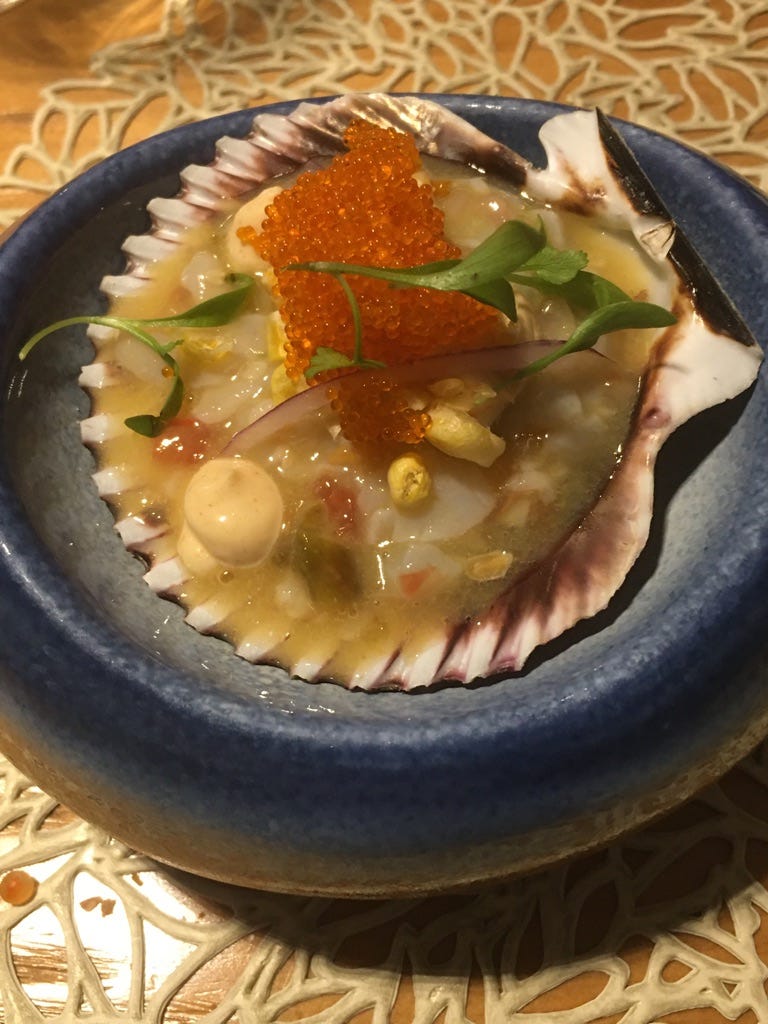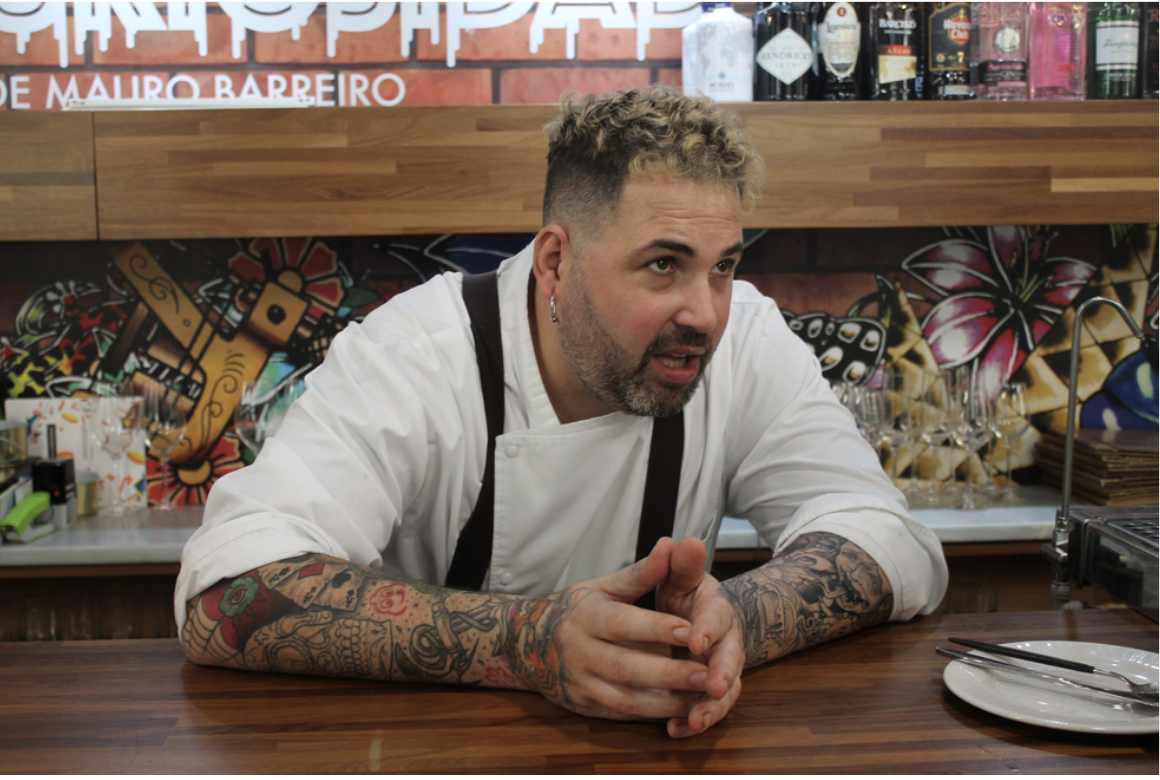I went to Cádiz, the oldest city in western Europe, to track down Flor de Garum, a version of the ancient fish sauce recreated by archaeologists and food technicians at the local university. I booked some meetings with local chefs who were using garum in their cooking, among them Mauro Barreiro, of La Curiosidad de Mauro. But first I decided to get to know the restaurants, bars and markets of Cádiz. Located on the Atlantic coast of Spain, isolated from the touristy Costa del Sol by mountains, its old city is surrounded by water on all sides. An ideal place for an opsophagos (lover of seafood) like me.
The narrow, nearly car-free streets of Cádiz are a paradise for flâneurs. (Especially before the beginning of the cruise season in February, when they suddenly become choked with slow-moving tour groups.)
One hundred and twenty-nine miradores—domestic lookout towers—rise above flat white roofs, as if the neoclassical merchant’s homes were craning their necks above the city walls to catch a glimpse of caravels returning laden with New World treasure. Here’s the view from atop the cathedral.
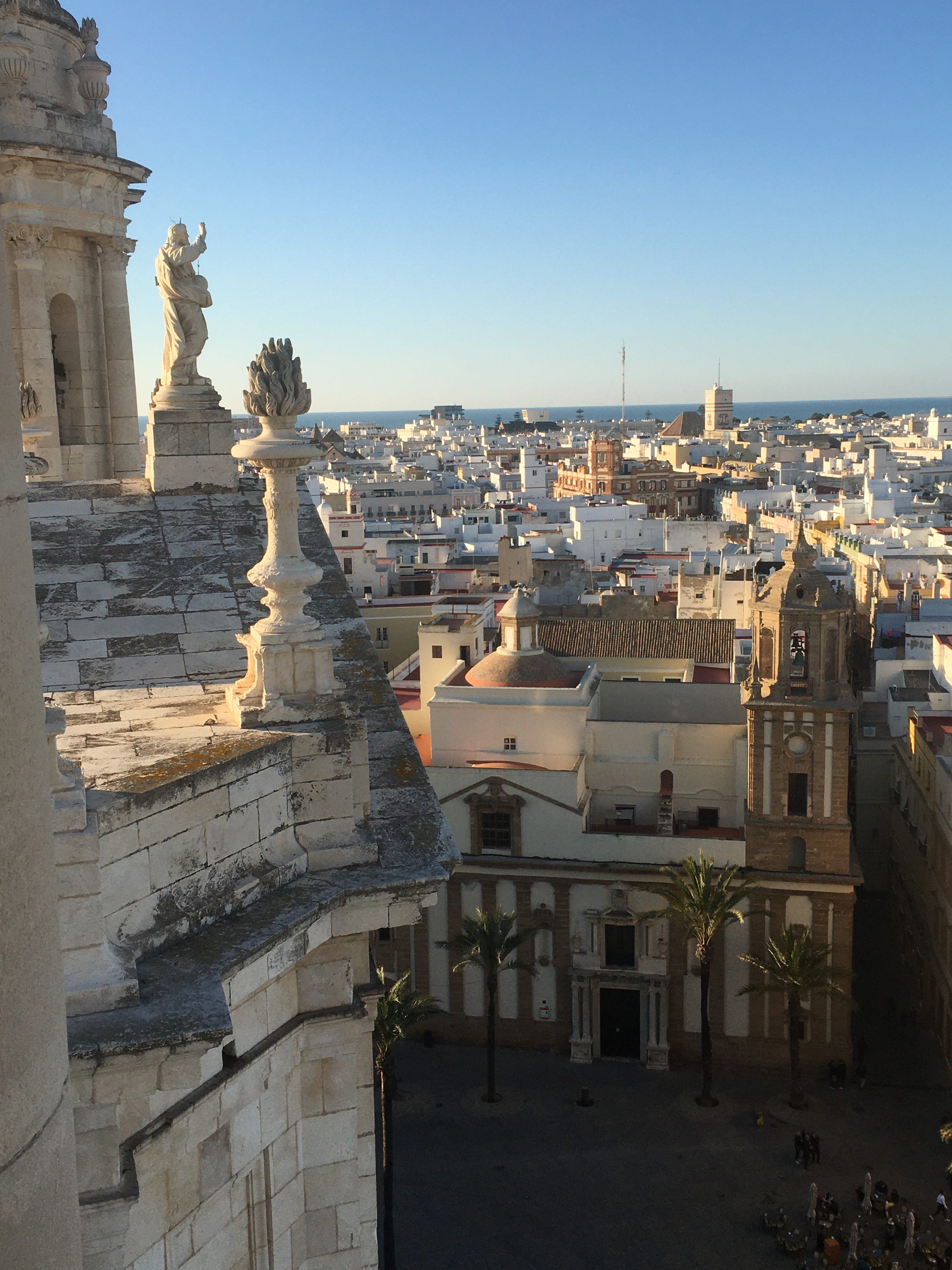
The bollards that protect the corners of buildings from the impacts of traffic are actually the upended barrels of cannons, salvaged from sunken ships (among them the two dozen or so carracks torched by privateer Francis Drake in his 1587 “Singeing of the King of Spain’s Beard”).
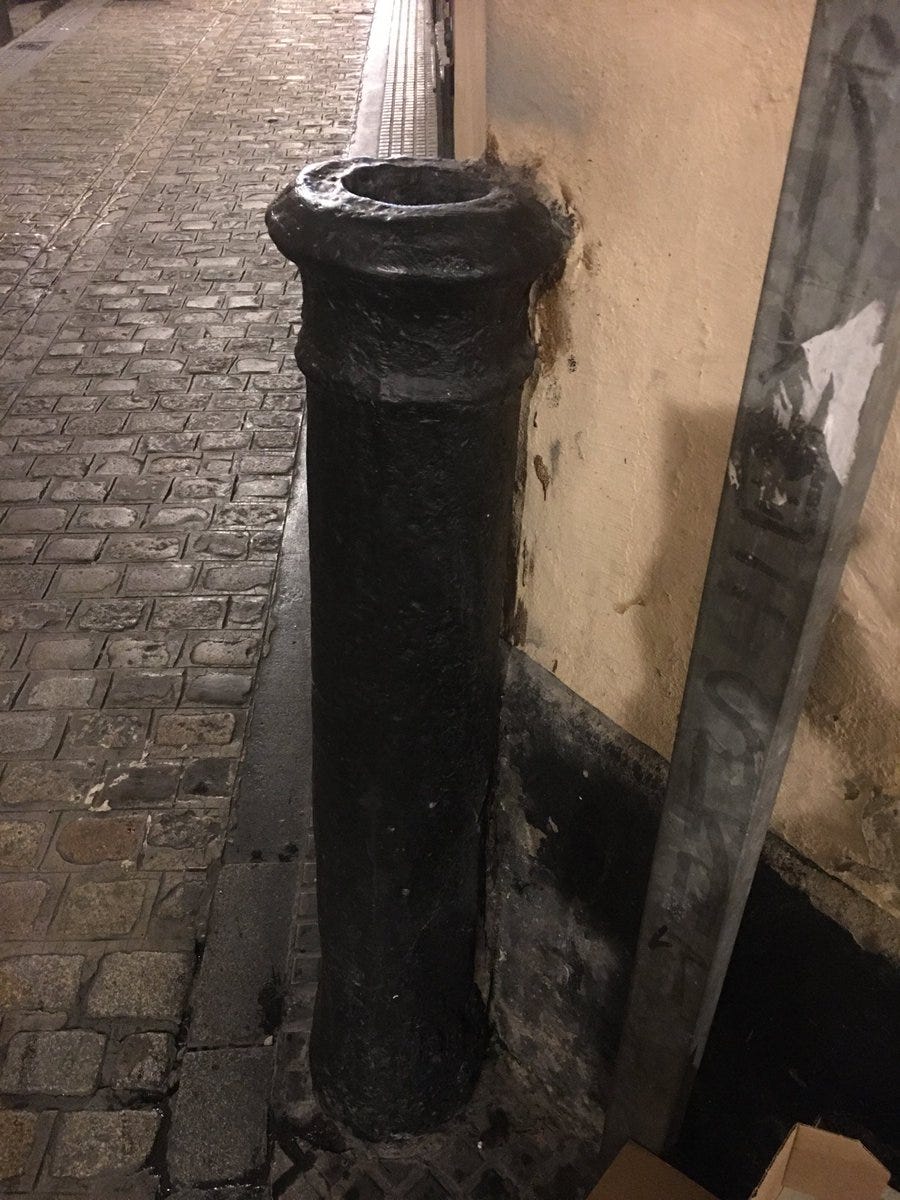
When I heard there was a camera obscura in Cádiz, I made it one of my first stops. I ascended a series of metal staircases to the top of one of the city’s tallest towers, the Torre Tavira. In a darkened room—the “camera obscura”—a rooftop periscope beamed sunlight from outside onto a concave screen. This created a living, moving simulacrum of the city outside—a still life, but with seagulls flying and ferries entering the harbor. When the attendant aimed the periscope at the market square below the tower, Lilliputian residents appeared beneath our noses, scurrying through their tasks. The attendant curved a piece of cardboard, so that the pedestrians appeared to be climbing up a footbridge. This must have been an astonishing spectacle before the age of cinema—and it was still a charmingly absorbing one in the 21st century.
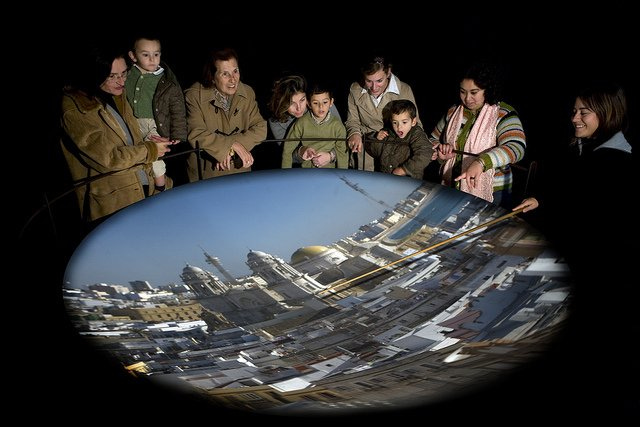
The heart of the city is occupied by the Mercado Central, built in what were once the gardens of a convent. At its gates, sunburnt old men shucked flat-shelled oysters on card tables, while the vendors within shouted over displays of mottled cuttlefish and ruby-red pyramids of tuna flesh; beneath the arcades, people sat on stools washing down the roe of freshly-cracked sea urchins with swigs of iced sweet vermouth. Because cars were largely absent from its narrow streets (another feature I found endearing), Cádiz had something of the serenity of Venice, and a similar sense of being an enchanted maritime gangway to a wider world. Paving stones, the polished floors of tapas bars, and the walls of the cathedral are made from piedra ostionera, a porous, locally-quarried sandstone studded with the shells of prehistoric oysters. There were times I had the feeling the entire city had just been hoisted, still wet and gleaming, from the seabed.
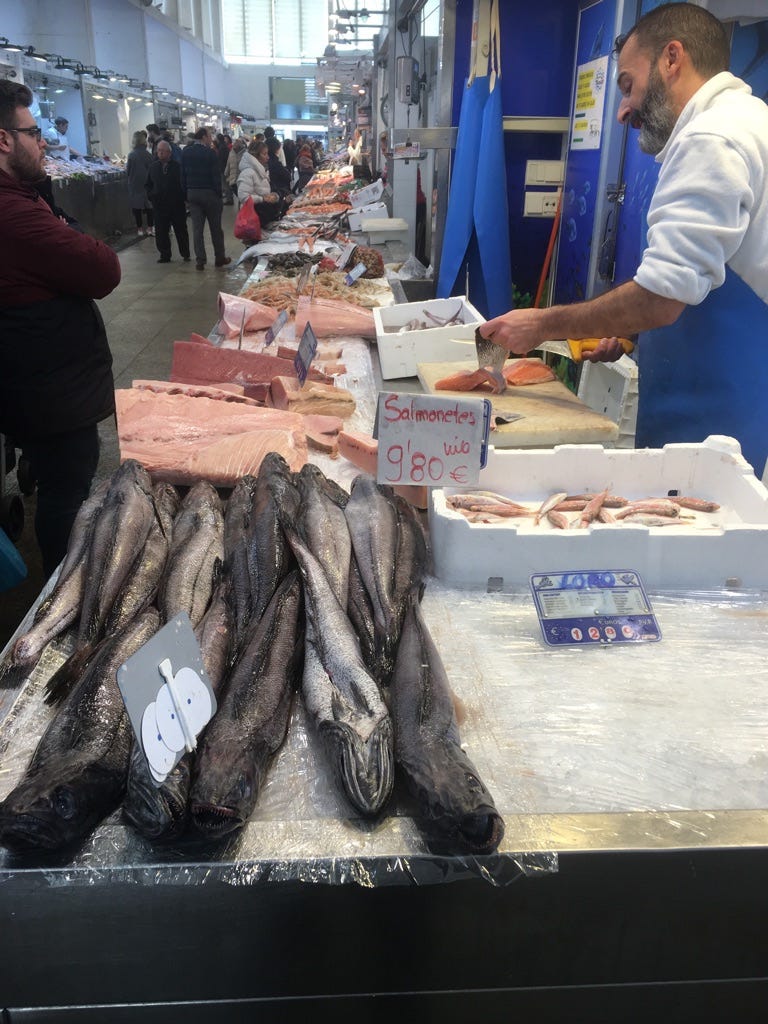
I’d forgotten much I loved the no-fuss approach to eating and drinking that prevails in Spain. You belly up to the bar, order a caña of beer or a glass of sherry, and then the tapas start to arrive, with the total recorded on the counter in front of you with a chunk of white chalk. At the Casa Manteca (the “House of Lard”), whose walls were covered with black-and-white photos of matadors—as well as a portrait of the Fascist dictator Franco, hung upside down—I peeled chicharrones, translucent cuts of fat-marbeled pork, from a rectangle of wax paper that served as a plate, and washed them down with swigs of Cruzcampo beer.
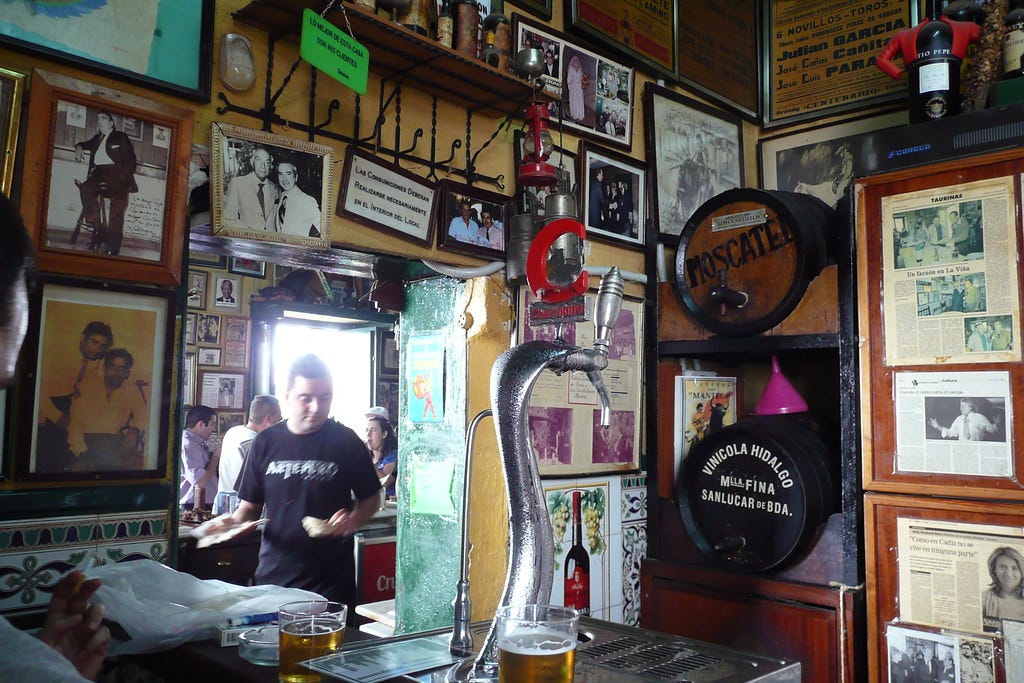
At the Taberna La Manzanilla, I ate my fill of giant cockles, fat green olives, and slices of pajarete, a hard sheep cheese coated with flakes of black pepper.
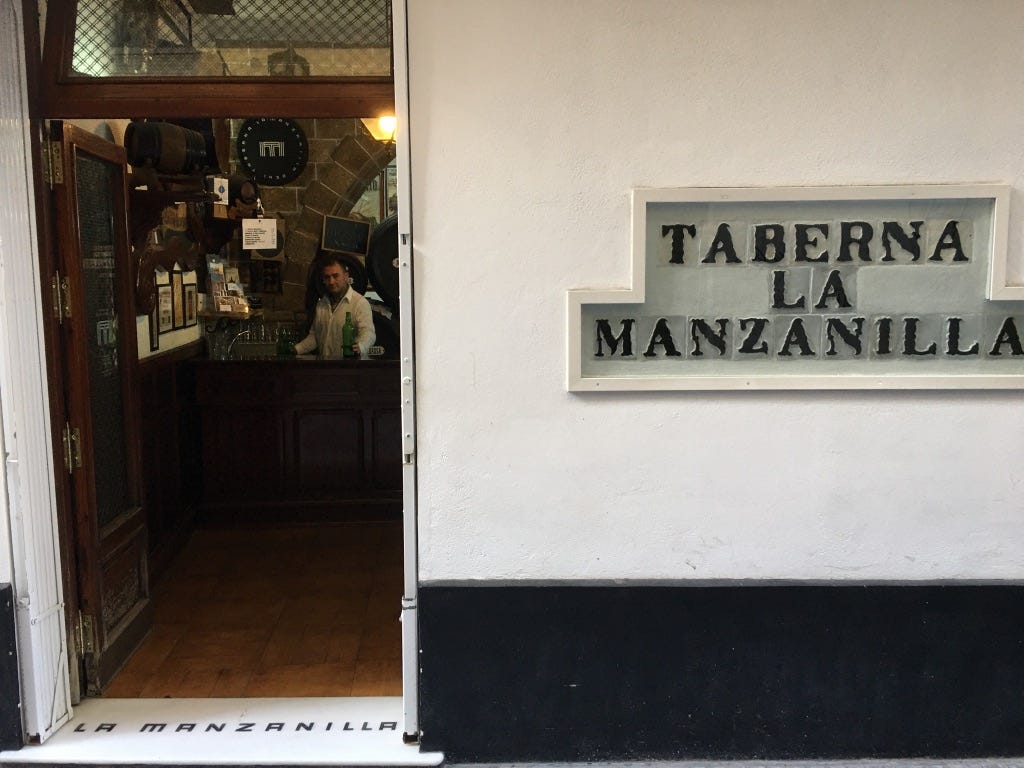
The barman, who was dressed in an immaculate white guayabera, poured me a glass of “Cream” aged in American oak; he explained that their sherry was “vivo”—alive, in microbiological terms—because the 500-litre barrels stacked behind him had never once been fully emptied since the tavern was founded in 1932.
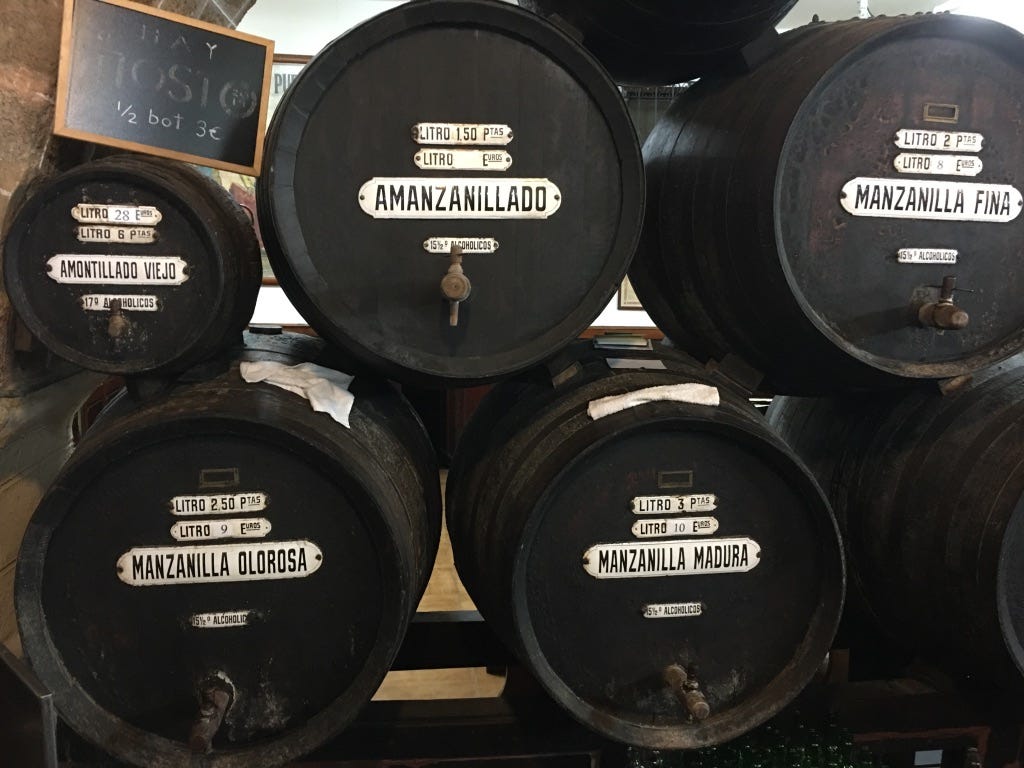
And I became a late-night habitué of Las Flores, a freiduria—a bar specializing in fried fish—where a stand-up dinner of vinegar-marinated anchovies, cazón en adobo (dogfish with a coating of garlic and spices, heavy on the cumin and paprika), and deep-fried cuttlefish, cost less than ten euros.
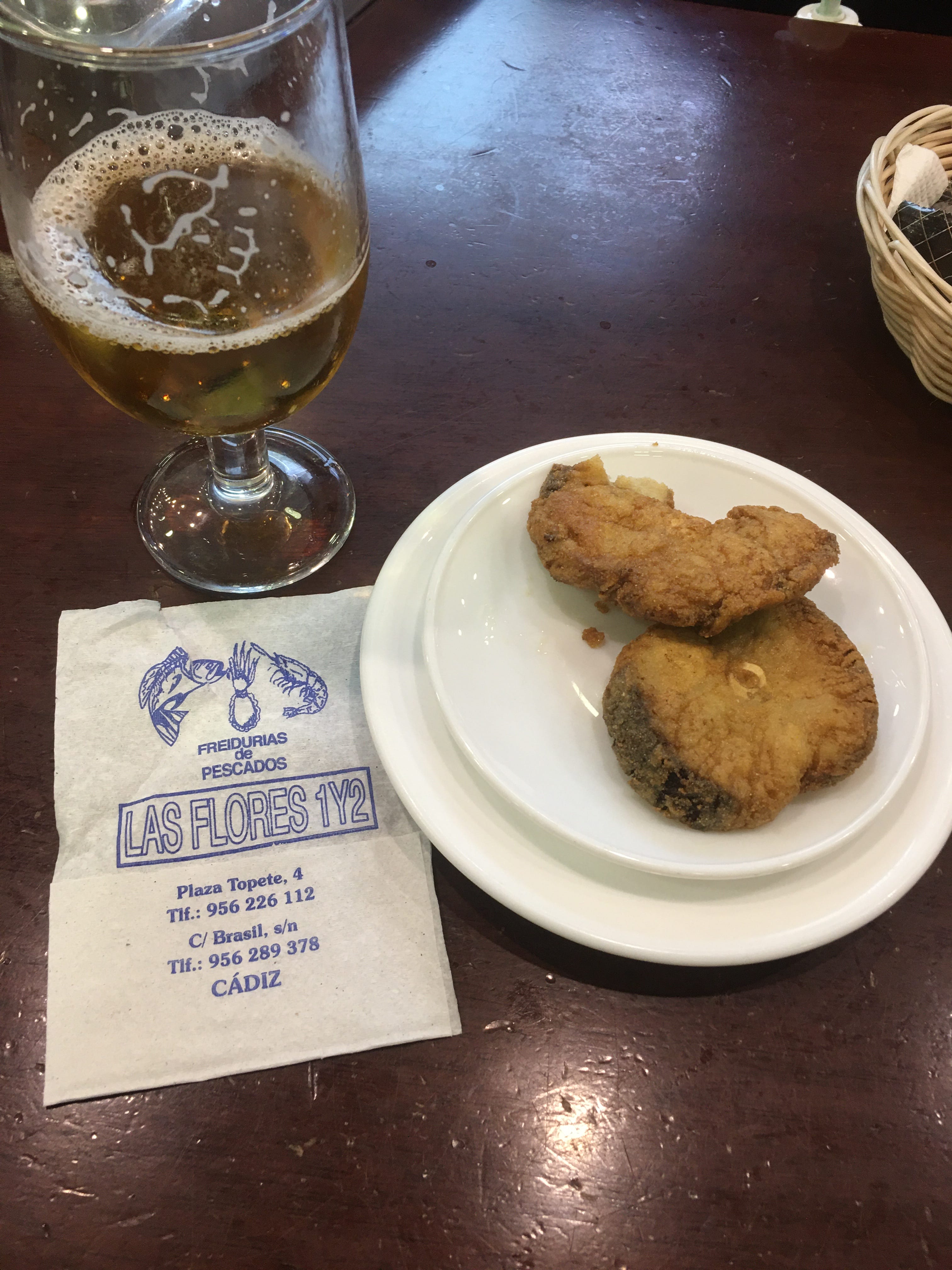
At certain points in my life, I’ve achieved near-fluency in Spanish, but it had been about a decade since I’d done interviews in the language. I reached out to Tim Gutteridge, a Scottish literary translator, and a resident of the city, who agreed to help me negotiate some of the nuances of rapid-fire Andalucían Spanish. He turned out to be a great bloke, and the ideal drinking and eating companion. We walked to Barreiro’s restaurant on a weekend afternoon. La Curiosidad de Mauro is known for its playful fusions of Andalucian staples with Latin American, North African, and Asian ingredients. Barreiro had agreed to meet me before the lunch service, and we took a seat at the long counter of La Curiosidad, whose walls were decorated with the same kind of Japanese floral and Mexican Day of the Dead imagery tattooed on his forearms.
Barreiro proudly showed me the head of Bibendum, the puffy tire-company mascot, which he’d had inked onto his right arm after being awarded his first Michelin star.
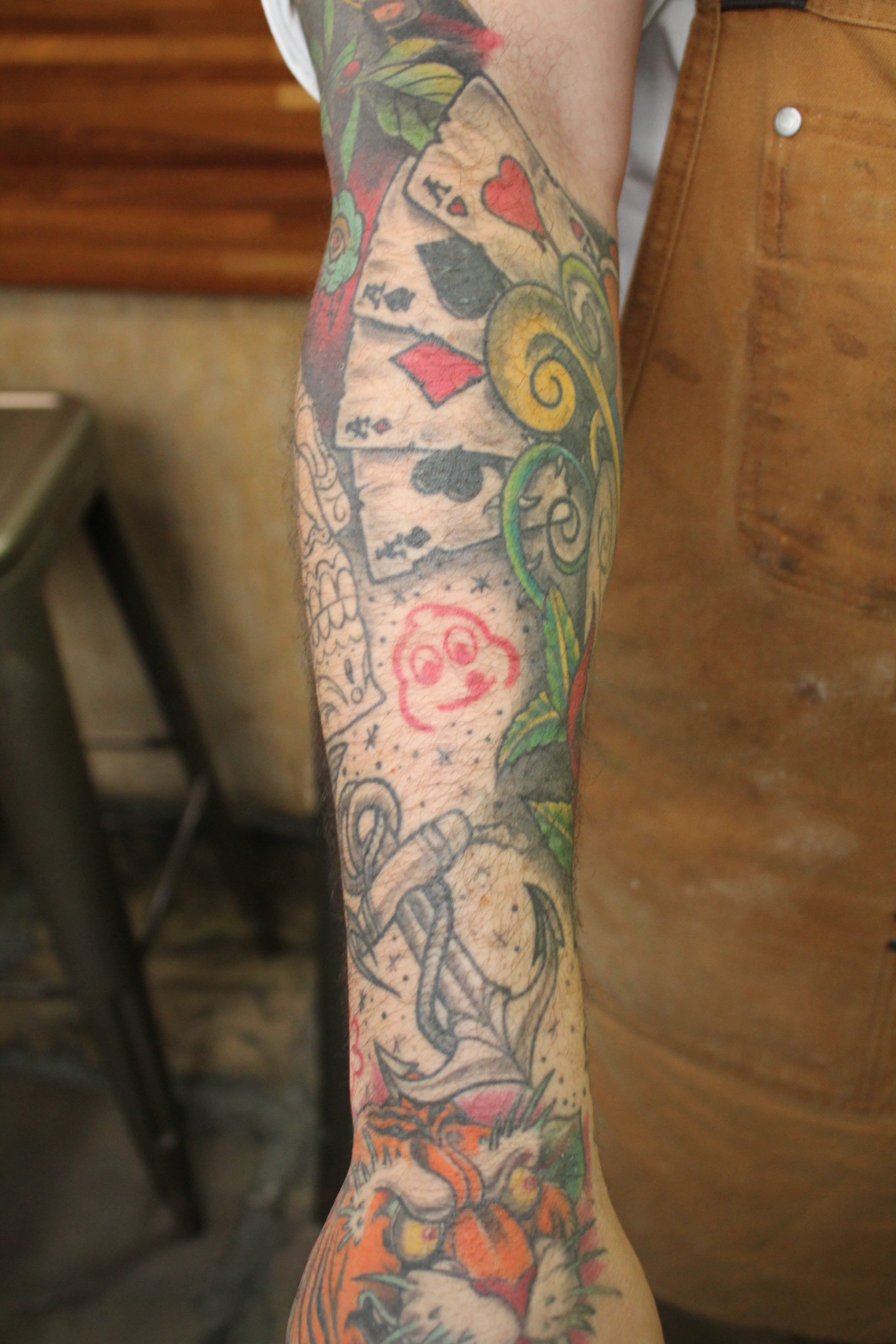
“I’d learned about garum in school, but what they told me stopped me from wanting to try it,” Barreiro told us. “It was supposed to be very strong, even rotten!” He had already sampled pungent fish sauces in his travels in Asia. “Flor de Garum has got this umami flavor, but it’s very harmonious, with herbal flavors. The Vietnamese sauces are more industrial; they use chemicals, and low-quality fish. Garum is completely organic.” For Barreiro, discovering the garum recreated by the team at the University of Cádiz was like making Szechuan or Indian food for the first time. “Cooking with garum opens up a timeline. Instead of investigating a different country, though, you’re investigating the past.”
Barreiro told me he tended to put garum on the menu in the summer, when he used it as a marinade for fresh-caught bluefin tuna, or whipped it into a mayonnaise on cubes of swordfish belly; in the fall, he used it to enhance the taste of wild mushrooms and asparagus. Tim and I took a seat in the dining room, decorated with a mural of Barreiro’s idol, Paul Bocuse.
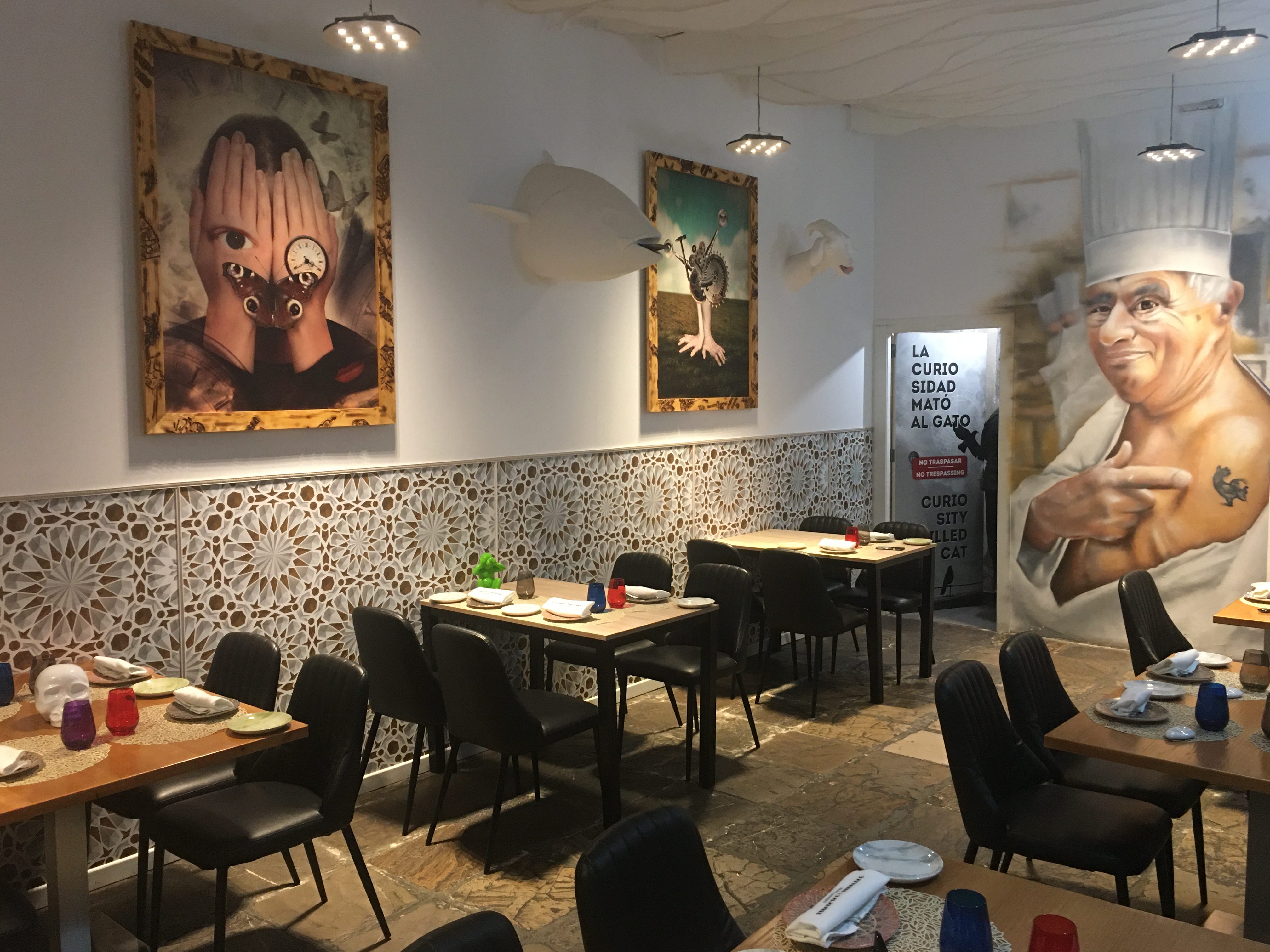
Though it was January, Barreiro had agreed to prepare one of his specialties for us. A waitress brought two long-handled spoons to the table. Each cradled a single egg yolk, from which about a fifth of the raw liquid had been extracted and replaced with an equal part of Flor de Garum; a thin slice of tuna loin was draped over the top of each yolk, like one of Salvador Dalí’s melting watches. I had no other option but to pop the whole spoon in my mouth. The yolk burst, and the creamy fattiness of the egg enveloped the melt-in-the-mouth—but still agreeably chewy—raw tuna. The dish was all about the contrast between the textures, but the presence of garum seemed to bring an added intensity to the fatty yolk and the unctuous tuna. (I always avoid ordering tuna, because it is overfished in the Mediterranean—but while sustainability is an important principle to me, it is sometimes trumped by the ancient tradition of hospitality, which is sacred.)
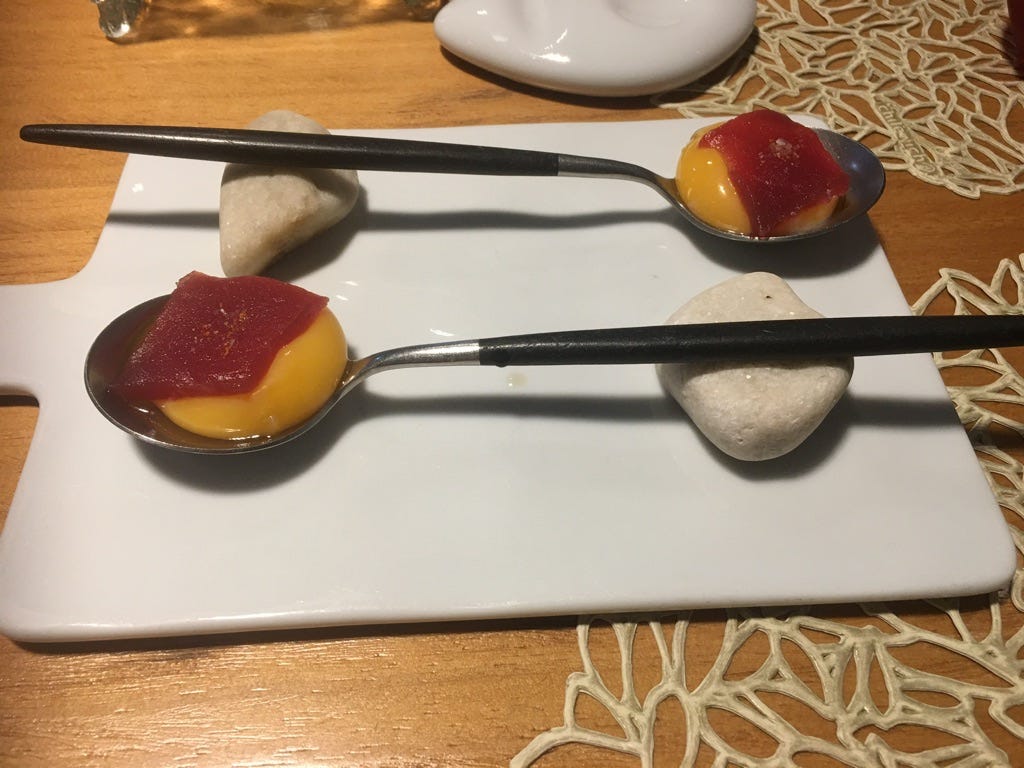
“For me,” said Barreiro, “Flor de Garum is actually a flavor enhancer.” I asked him if there was a secret to using it in cooking. “The only secret is to use the right amount. It’s like the way they use soy sauce in Japan; if you put too much on a piece of squid, you won’t taste the squid at all, just the soy. It’s the same with garum.”
Other garum-lashed courses would follow, including the beautifully presented scallop (I wore one of those shells around my neck on the pilgrimage to Santiago de Compostella twenty years ago). But Tim and I were already thinking about our next meal, where another of Câdiz’s chefs was said to be taking a different approach to cooking with ancient fish sauce. More on that in the next instalment.
